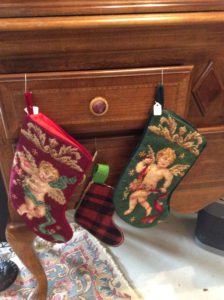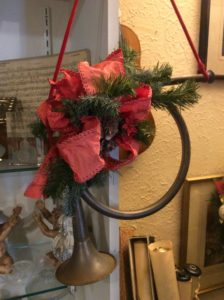Christmas traditions around the world
According to reports by Captain John Smith, the first eggnog made in the United States was consumed in his 1607 Jamestown settlement. Nog comes from the word grog, which refers to any drink made with rum.
Poinsettia plants are named after Joel R. Poinsett, an American minister to Mexico, who brought the red-and-green plant from Mexico to America in 1828.
Caroling began in England. Wandering musicians would travel from town to town visiting castles and homes of the rich. In return for their performance, the musicians hoped to receive a hot meal or money.
 In the US and England
In the US and England  children hang stockings on their bedpost or near a fireplace on Christmas Eve, hoping that it will be filled with treats while they sleep. In Scandinavia, similar-minded children leave their shoes on the hearth. This tradition can be traced to legends about Saint Nicholas. One legend tells of three poor sisters who could not marry because they had no money for a dowry. To save them from being sold by their father, St. Nick left each of the three sisters gifts of gold coins. One went down the chimney and landed in a pair of shoes that had been left on the hearth. Another went into a window and into a pair of stockings left hanging by the fire to dry.
children hang stockings on their bedpost or near a fireplace on Christmas Eve, hoping that it will be filled with treats while they sleep. In Scandinavia, similar-minded children leave their shoes on the hearth. This tradition can be traced to legends about Saint Nicholas. One legend tells of three poor sisters who could not marry because they had no money for a dowry. To save them from being sold by their father, St. Nick left each of the three sisters gifts of gold coins. One went down the chimney and landed in a pair of shoes that had been left on the hearth. Another went into a window and into a pair of stockings left hanging by the fire to dry.
Norway is the birthplace of the Yule log. The ancient Norse used the Yule log in their celebration of the return of the sun at winter solstice. “Yule” came from the Norse word hweol, meaning wheel. The Norse believed that the sun was a great wheel of fire that rolled towards and then away from the earth. Ever wonder why the family fireplace is such a central part of the typical Christmas scene? This tradition dates back to the Norse Yule log. It is probably also responsible for the popularity of log-shaped cheese, cakes, and desserts during the holidays.
Decorating evergreen trees had always been a part of the German winter solstice tradition. The first “Christmas trees” explicitly decorated and named after the Christian holiday, appeared in Strasbourg, in Alsace in the beginning of the 17th century. After 1750, Christmas trees began showing up in other parts of Germany. In the 1820s, the first German immigrants decorated Christmas trees in Pennsylvania. After Germany’s Prince Albert married Queen Victoria, he introduced the Christmas tree tradition to England. In 1848, the first American newspaper carried a picture of a Christmas tree and the custom spread to nearly every home in just a few years.






